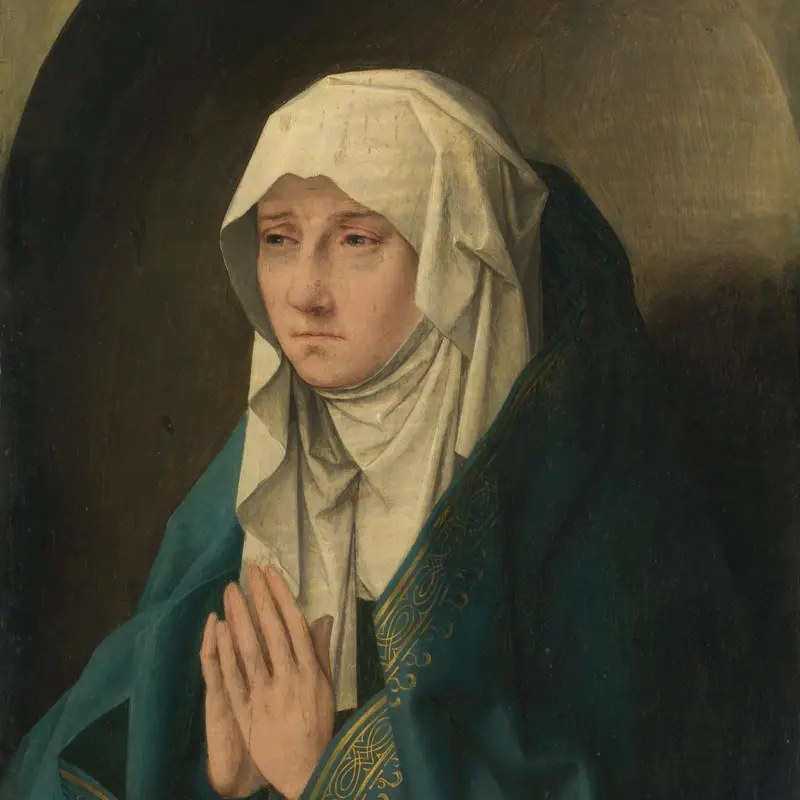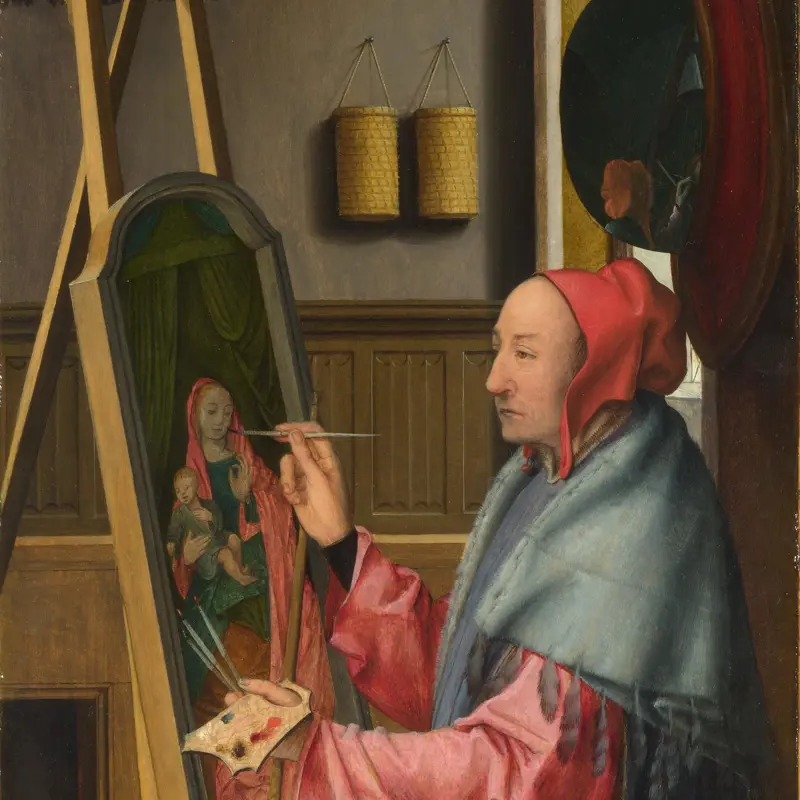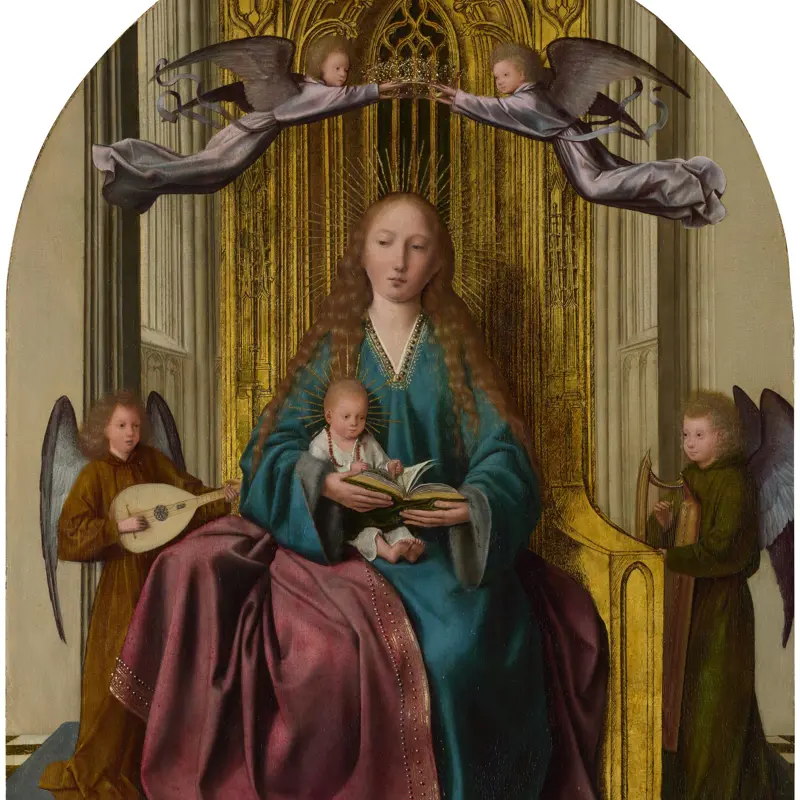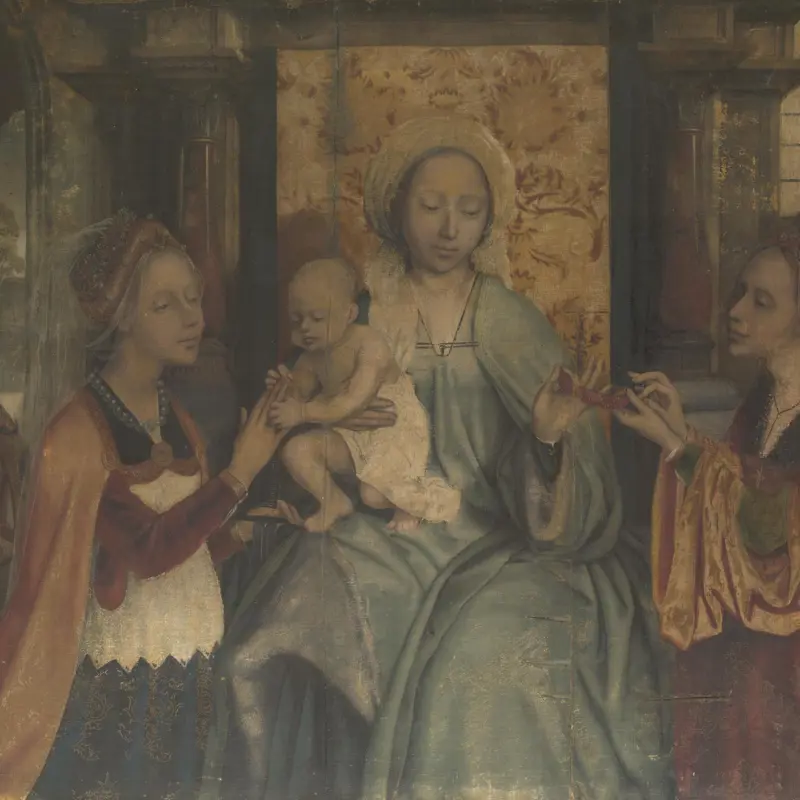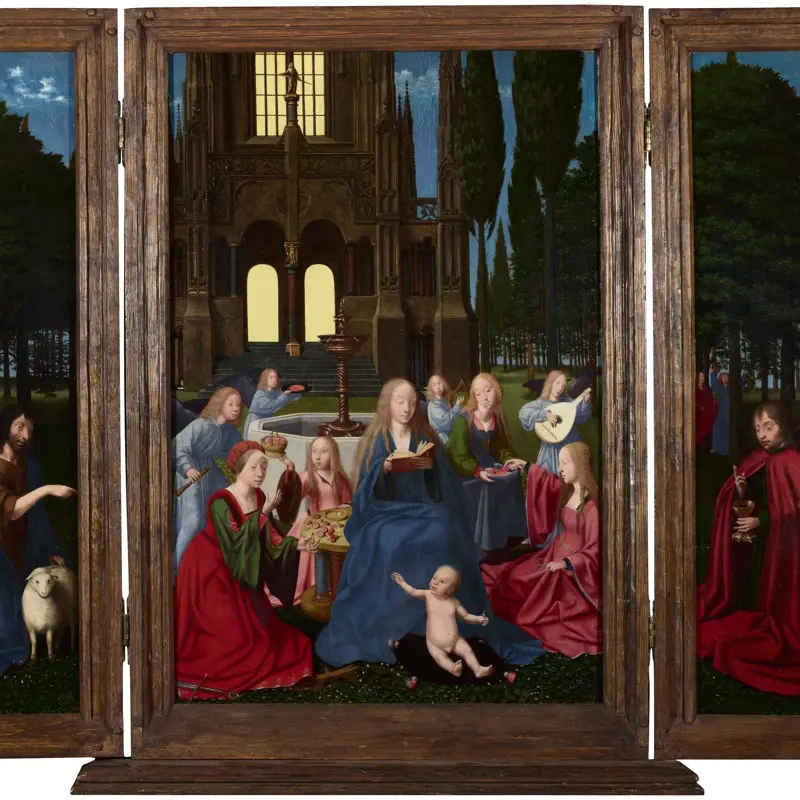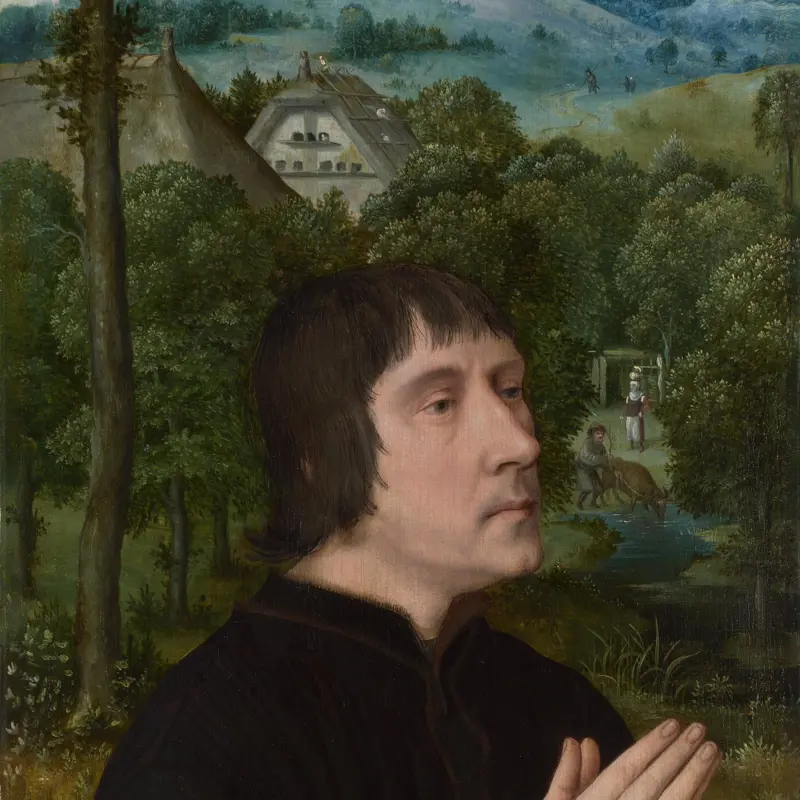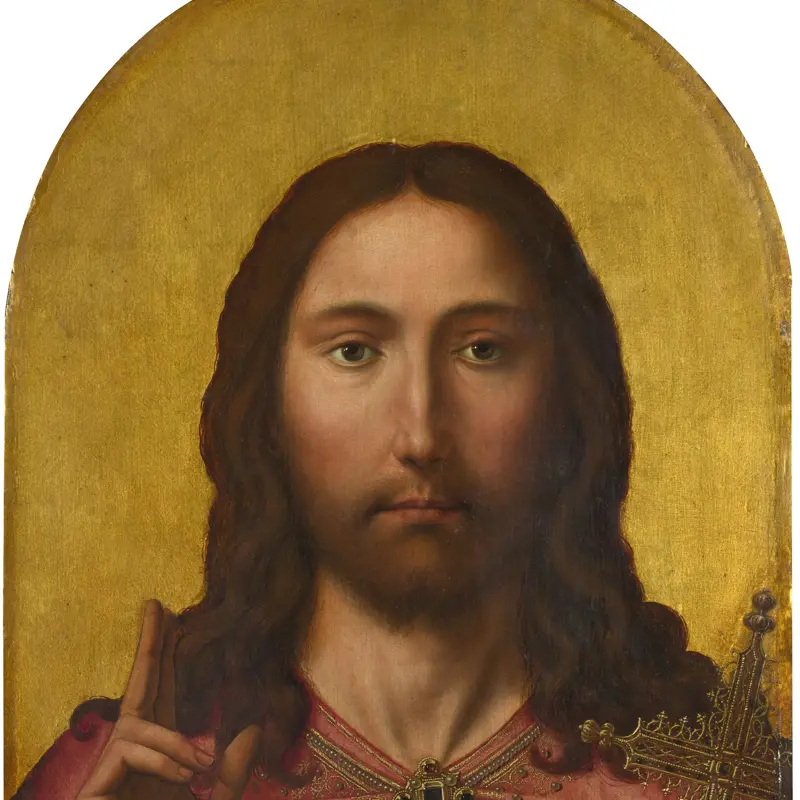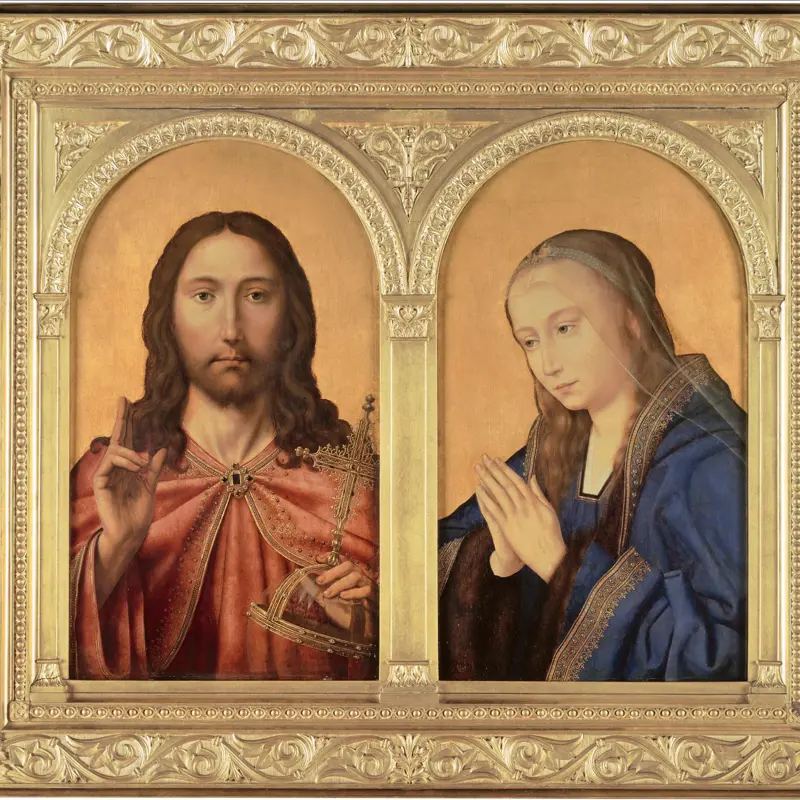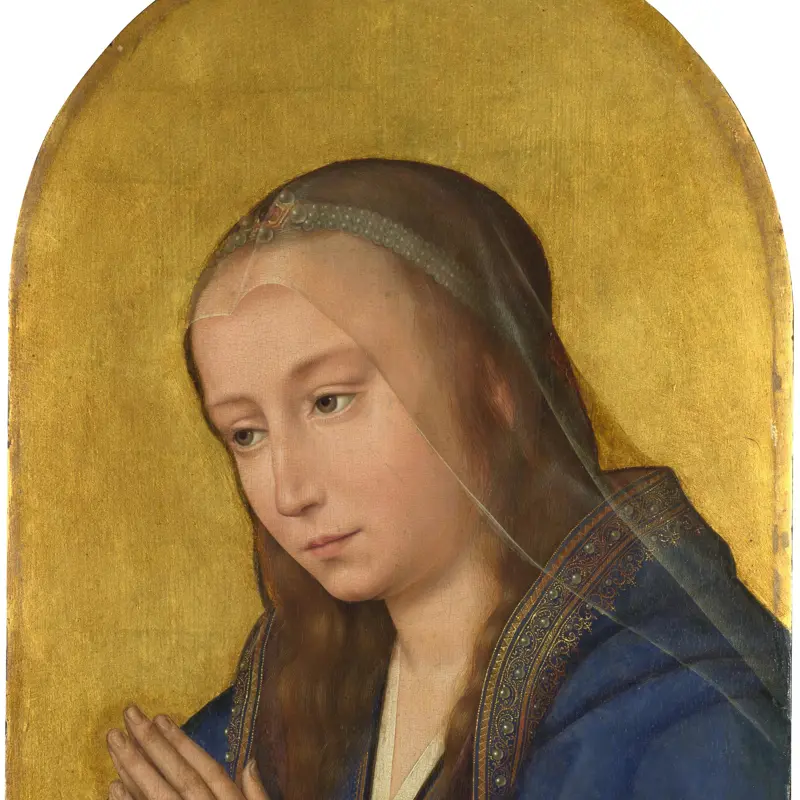Workshop of Quinten Massys, 'Saint Luke painting the Virgin and Child', about 1520?
About the work
Overview
A man sits in a luxuriously furnished room, painting a picture. This is Saint Luke, patron saint of painters and physicians. Many of the objects around him refer to these professions, and his symbol, the ox, lies at his side.
The picture is full of information on how Renaissance painters worked. Saint Luke is seated at an easel; his painting, already in its frame, rests on an adjustable ledge. He is working on the Virgin’s head and his wooded palette is set out with an array of pigments. The saint supports his hand with a mahlstick with a padded grey knob on the end, which rests on the frame, and has a selection of brushes with wooden handles.
Books and containers for medicines sit on shelves at the back. Below hang two basketwork canisters, containers for urine flasks – the physician’s characteristic tool.
Key facts
Details
- Full title
- Saint Luke painting the Virgin and Child
- Artist
- Workshop of Quinten Massys
- Artist dates
- 1465/6 - 1530
- Part of the series
- Panel from a Triptych
- Date made
- About 1520?
- Medium and support
- Oil on wood (Baltic/Polish oak, identified)
- Dimensions
- 114.9 × 35.4 cm
- Acquisition credit
- Presented by Henry Wagner, 1924
- Inventory number
- NG3902
- Location
- Not on display
- Collection
- Main Collection
Provenance
Additional information
Text extracted from the ‘Provenance’ section of the catalogue entry in Lorne Campbell, ‘National Gallery Catalogues: The Sixteenth Century Netherlandish Paintings: With French Paintings before 1600’, London 2014; for further information, see the full catalogue entry.
Bibliography
-
1945Davies, Martin, National Gallery Catalogues: Early Netherlandish School, London 1945
-
1955Davies, Martin, National Gallery Catalogues: Early Netherlandish School, 2nd edn (revised), London 1955
-
1987Davies, Martin, National Gallery Catalogues: The Early Netherlandish School, 3rd edn, London 1987
-
2001
C. Baker and T. Henry, The National Gallery: Complete Illustrated Catalogue, London 2001
-
2014
L. Campbell, National Gallery Catalogues: The Sixteenth Century Netherlandish Paintings: With French Paintings before 1600, 2 vols, London 2014
About this record
If you know more about this work or have spotted an error, please contact us. Please note that exhibition histories are listed from 2009 onwards. Bibliographies may not be complete; more comprehensive information is available in the National Gallery Library.
Images
About the series: Panel from a Triptych
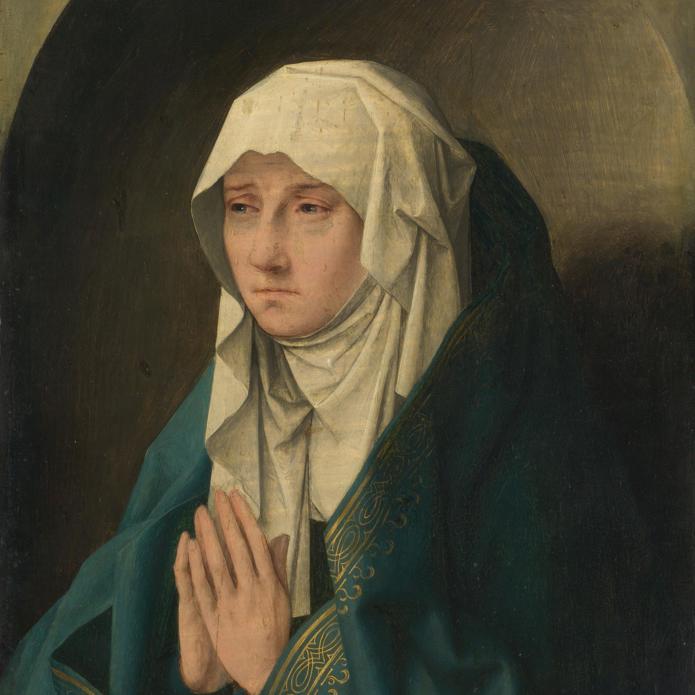
Overview
These two paintings – Saint Luke painting the Virgin and Child and The Virgin standing in a Niche – are, in fact, the back and front of the same panel, which has been sawn through its thickness. They once formed the right wing of a triptych (a painting made in three parts). Although they have been cut on all four sides, not much has been lost and the triptych must have been tall and narrow in format. The centre panel probably showed the Virgin and Child enthroned, much as they appear in the picture Saint Luke is shown painting.
Differences in technique suggest they were by different painters, but both are close to the style of Massys and follow many of his technical procedures. They may well have been produced by two or more assistants in his workshop or by painters who trained there and continued to work together after leaving.

